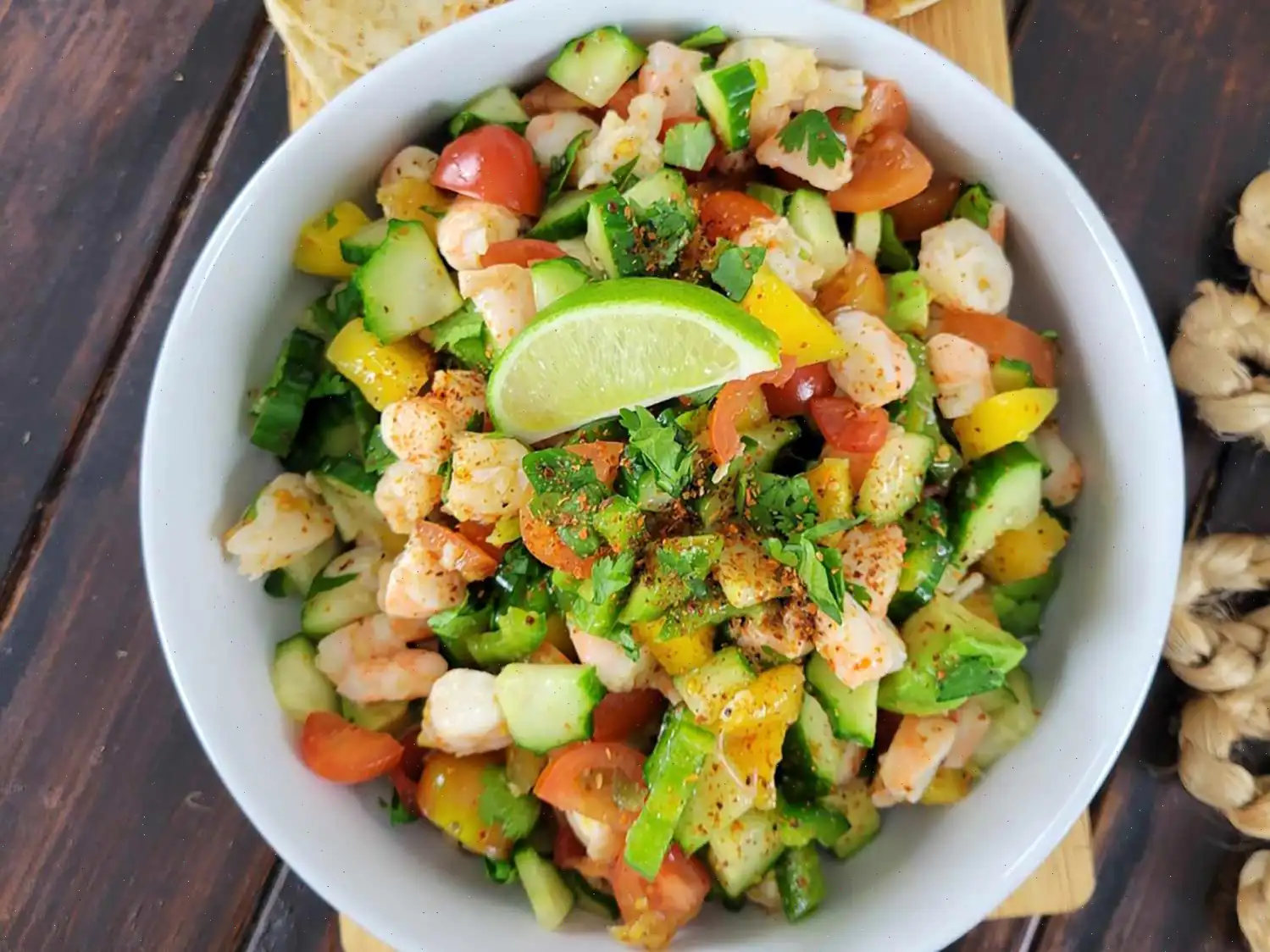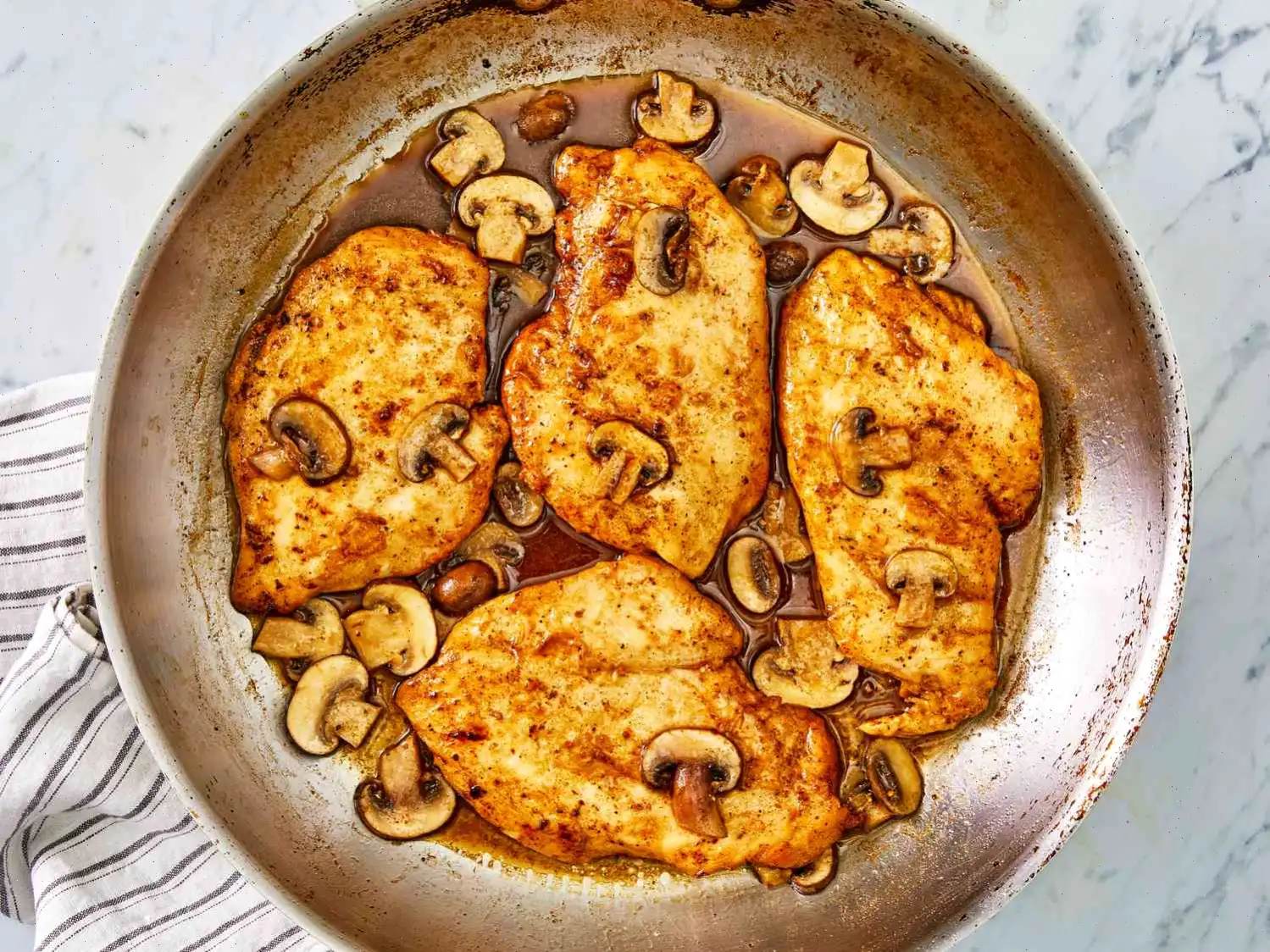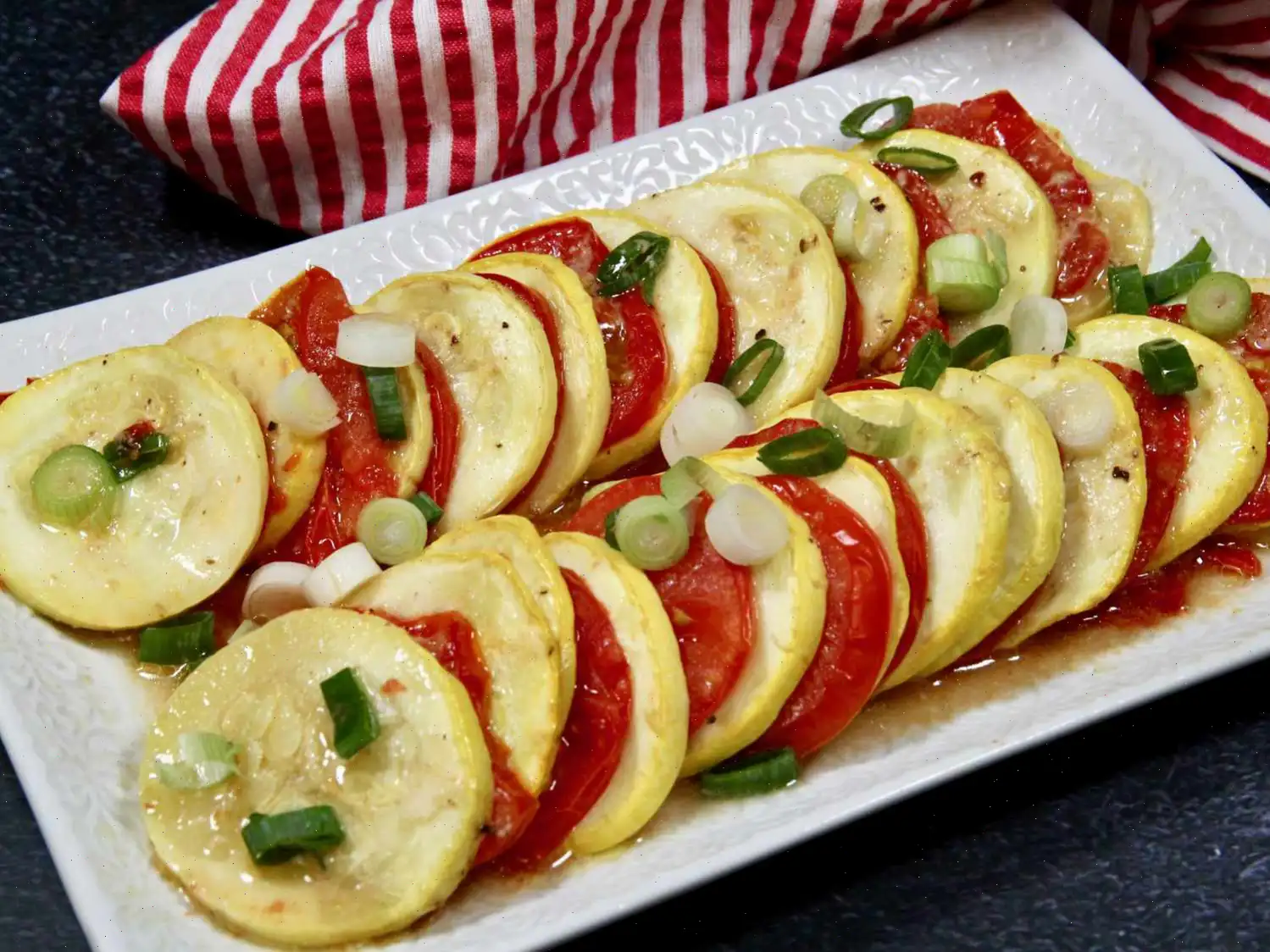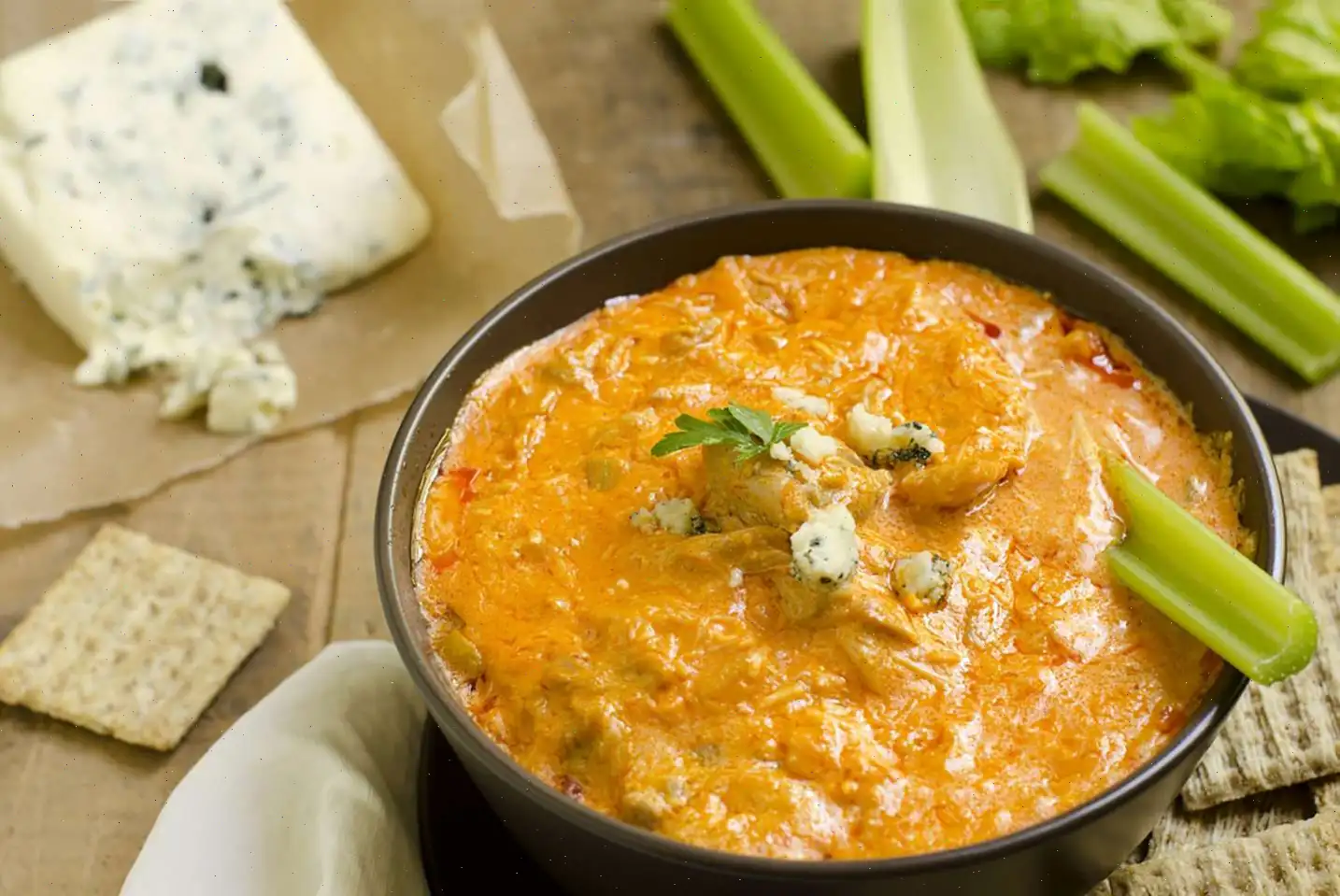
Mango Shrimp Ceviche Recipe
Ingredients
This recipe was developed at its original yield. Ingredient amounts are automatically adjusted, but cooking times and steps remain unchanged. Note that not all recipes scale perfectly.
- 1 pound cooked large shrimp, cut into bite-sized pieces
- 1 cucumber, cut into bite-sized pieces
- 1 pint cherry tomatoes, halved
- 1 jalapeno pepper, thinly sliced
- 1 fresh mango, peeled, pitted, and cut into bite-sized pieces
- 1 lime, juiced, or more to taste
- 2 tablespoons chopped fresh cilantro
- 1 tablespoon chili lime seasoning (such as Tajin), or to taste
Directions
- In a large bowl, combine shrimp, cucumber, tomatoes, jalapeno, mango, lime juice, cilantro, and Tajin seasoning.
- Stir everything together well, then taste the mixture. Add more Tajin seasoning if needed to adjust the flavor to your liking.
- If you want the flavors to meld further, cover the bowl and refrigerate the salad for 1 hour. This step is optional but recommended for more depth of flavor.
Nutrition Facts (per serving)
| Nutrition Facts | Amount | % Daily Value* |
|---|---|---|
| Calories | 274 | - |
| Total Fat | 3g | 4% |
| Saturated Fat | 1g | 4% |
| Cholesterol | 239mg | 80% |
| Sodium | 1644mg | 71% |
| Total Carbohydrate | 36g | 13% |
| Dietary Fiber | 5g | 19% |
| Total Sugars | 22g | - |
| Protein | 30g | 59% |
| Vitamin C | 78mg | 86% |
| Calcium | 202mg | 16% |
| Iron | 3mg | 14% |
| Potassium | 1044mg | 22% |
* Percent Daily Values are based on a 2,000 calorie diet. Your daily values may be higher or lower depending on your calorie needs.
** Nutrient information is not available for all ingredients. Amount is based on available nutrient data.
If you are following a medically restrictive diet, please consult your doctor or registered dietitian before preparing this recipe for personal consumption.
The History and Origins of Mango Shrimp Ceviche
Ceviche, a dish with roots stretching back to pre-Columbian civilizations along the coasts of South America, has long been celebrated for its refreshing combination of seafood and citrus. The modern version of ceviche, which includes shrimp and tropical fruits like mango, emerged as coastal cuisine evolved in Mexico and Central America. The incorporation of mango likely developed as local chefs sought to balance the acidity of lime juice with the natural sweetness of fruit, creating a flavor profile that is both vibrant and harmonious.
Regional Variations
Mango shrimp ceviche is particularly popular in coastal regions of Mexico, such as Sinaloa and Veracruz, where fresh shrimp and tropical fruits are abundant. In these areas, ceviche often includes additional ingredients like avocado, bell peppers, or even coconut milk, reflecting local tastes and available produce. In other parts of Latin America, ceviche recipes may favor firm white fish, scallops, or octopus, but the use of shrimp paired with mango is a hallmark of Mexican coastal cuisine.
How It Differs from Similar Dishes
While ceviche shares similarities with other raw or lightly cooked seafood dishes, such as poke from Hawaii or sushi from Japan, the defining characteristic is the marination of seafood in citrus juice. Mango shrimp ceviche distinguishes itself with the interplay of sweet and spicy flavors, often enhanced by jalapeo, chili-lime seasoning, and fresh cilantro. Unlike typical fish ceviches, the shrimp in this recipe is pre-cooked, which makes it faster to prepare while retaining a firm, tender texture.
Where It Is Commonly Served
Mango shrimp ceviche is a staple appetizer in seaside restaurants, beachside food stalls, and summer gatherings throughout Mexico and Latin America. It is also popular at casual parties and barbecues, served in small bowls, on tostadas, or wrapped in lettuce leaves. Its bright presentation and bold flavors make it an attractive dish for both family meals and festive occasions.
Interesting Facts
- Ceviche was traditionally prepared using freshly caught fish and seafood, with lime juice serving as a natural preservative.
- The combination of shrimp and mango is not only flavorful but also visually appealing, with contrasting colors that make the dish especially photogenic.
- Chili-lime seasoning, like Tajn, adds a uniquely Mexican twist, combining tanginess, saltiness, and mild heat in every bite.
- Despite being a raw seafood dish, using pre-cooked shrimp makes this ceviche accessible and safe for a wider audience, without compromising on taste.
- Mango shrimp ceviche is often considered a summer superfood, packed with protein, vitamins, and antioxidants, making it both healthy and indulgent.








